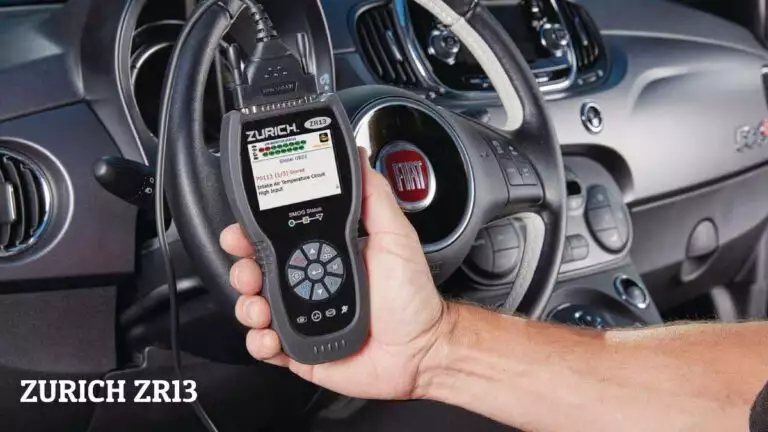How to Check If Radiator is Working
To check if a radiator is working, feel the radiator for heat and listen for any unusual noises. Understanding the basics of radiator functionality and how to troubleshoot any issues can be beneficial for homeowners.
Being able to identify common signs of a malfunctioning radiator can lead to early detection and prompt repairs, ensuring optimal heating efficiency in the home. Whether it’s feeling the radiator for warmth or listening for strange sounds, simple checks can help determine whether the radiator is functioning correctly.
This guide will explore methods to assess a radiator’s performance, providing valuable insights for maintaining a comfortable and functional heating system. By familiarizing yourself with these troubleshooting techniques, you can address potential radiator problems promptly and effectively.

Credit: carfromjapan.com
Signs Of A Faulty Radiator
A faulty radiator may show signs such as overheating, coolant leaks, and discolored or rusted coolant. Check for these indicators regularly to ensure your radiator is working efficiently and avoid potential engine damage. Regular maintenance and timely repairs are crucial to keep your radiator in good working condition.
Lack Of Heat
If you’re not feeling any warmth coming from your car’s heater, it may be a sign of a faulty radiator. The radiator plays a crucial role in cooling the engine and heating the cabin. When the radiator is not functioning properly, it cannot transfer heat away from the engine effectively, resulting in a lack of warmth in the car’s interior.
There are a few potential reasons for this lack of heat:
- Blocked Radiator: Over time, debris and sediment can accumulate inside the radiator, obstructing the flow of coolant. This blockage prevents the radiator from effectively transferring heat away from the engine, leading to insufficient heat in the cabin.
- Leaking Coolant: A radiator leak can cause a decrease in coolant levels, which in turn affects the heat output. When there is not enough coolant circulating through the system, the heat exchange process is compromised, resulting in reduced warmth inside the car.
- Faulty Thermostat: The thermostat is responsible for regulating the flow of coolant through the radiator. If the thermostat is stuck closed, the coolant will not circulate properly, leading to a lack of heat in the cabin.
Low Coolant Levels
Checking the coolant levels regularly is an essential part of maintaining your vehicle’s radiator. Low coolant levels may indicate a problem with the radiator or another component of the cooling system. Here are a few possible causes of low coolant levels:
- Leaking Radiator: A leaking radiator can result in coolant loss, leading to low levels in the system. Visually inspect the radiator for signs of leakage, such as coolant stains or puddles underneath the car.
- Cracked Radiator Cap: The radiator cap is designed to maintain the system’s pressure and prevent coolant leakage. If the cap is damaged or not properly sealed, coolant can evaporate or leak out, causing a decrease in coolant levels.
- Internal Leaks: Internal leaks within the engine, such as a blown head gasket or a cracked engine block, can cause coolant to mix with other fluids. This mixing leads to a drop in coolant levels and can result in engine overheating.
Regularly checking the coolant levels and addressing any noticeable decrease can help to identify potential issues with the radiator and prevent further damage to the engine.
Visual Inspection
Radiator issues can lead to engine overheating, so it’s essential to regularly check its condition. One way to do this is through a visual inspection, which involves looking for leaks and assessing the radiator fins.
Check For Leaks
- Inspect the ground under your vehicle for visible coolant puddles.
- Check the radiator hoses and connections for any signs of dripping.
- Look for white or greenish residue, indicating a coolant leak.
Inspect Radiator Fins
- Carefully examine the radiator fins for any debris or blockages.
- Ensure the fins are straight and not bent or damaged.
- Clean the fins using a soft brush or compressed air to remove dirt and debris.
Testing The Radiator
When it comes to checking if your radiator is working, testing it is crucial. Here are two methods to ensure your radiator is functioning properly:
Use An Infrared Thermometer
1. Point infrared thermometer at various points on the radiator to check for consistent temperatures.
2. Ensure no cool spots are detected, as this may indicate a blockage or air pockets.
Pressure Test
1. Use a pressure tester to examine the radiator system for leaks or weak spots.
2. Observe the pressure gauge for fluctuations, indicating a potential issue with the radiator.

Credit: www.theaa.com
Checking For Blockages
When it comes to ensuring optimal performance of your radiator, checking for blockages is crucial. Blockages in the radiator can lead to overheating issues and potential damage to your vehicle’s engine. By keeping an eye out for any signs of blockages and taking prompt action, you can prevent costly repairs and enjoy a smooth driving experience.
Observe Coolant Flow
To begin the process of checking for blockages in your radiator, the first step is to observe the coolant flow. Start by allowing your engine to run until it reaches its normal operating temperature. While the engine is running, carefully check the coolant flow through the radiator. Look for any visible restrictions or signs of reduced flow, such as slow-moving or stagnant coolant.
Additionally, use caution when inspecting the radiator and avoid touching any hot components. A physically damaged radiator, such as one with bent fins or cracks, may also contribute to blockages and must be addressed accordingly.
Flushing The Radiator
If you suspect a blockage in your radiator, the next step is to flush out any debris or sediment that may be hindering the coolant flow. Flushing the radiator will help remove any build-up and restore the proper functioning of the cooling system. Here’s a simple guide to help you with the process:
- Begin by locating the radiator drain plug. Refer to your vehicle’s manual for its precise location and follow the instructions provided.
- Place a drain pan beneath the radiator drain plug to collect the old coolant. Ensure that the pan has sufficient capacity to hold the entire coolant volume.
- Carefully open the radiator drain plug and allow the coolant to drain completely. Once drained, securely close the drain plug.
- Next, remove the radiator cap to facilitate the flushing process.
- Use a specialized radiator flush solution or a mixture of water and a mild detergent to flush out the radiator. Follow the product’s instructions for the appropriate amount.
- Start your vehicle and let it run for a few minutes to circulate the flush solution throughout the cooling system. This will help dislodge any debris or sediment that may be causing the blockage.
- Once you’ve completed the flushing process, turn off your engine and allow it to cool down.
- Finally, drain the flush solution, replace it with the recommended coolant, and ensure proper sealing of the radiator cap.
By regularly observing the coolant flow and performing radiator flushes, you can prevent blockages and maintain the optimal functioning of your radiator. Remember, it’s crucial to follow your vehicle manufacturer’s guidelines and specifications during this process.
Professional Assessment
When it comes to checking the functionality of your radiator, a professional assessment is key in ensuring that your vehicle’s cooling system is operating effectively. Consulting a mechanic and conducting radiator efficiency tests are vital steps in determining whether your radiator is in good working condition.
Consulting A Mechanic
If you suspect that your radiator is not working properly, it is recommended to consult a qualified mechanic to conduct a thorough inspection. A knowledgeable mechanic can identify any issues with the radiator and provide expert recommendations for repairs or replacements, if necessary.
Radiator Efficiency Tests
Radiator efficiency tests are essential for evaluating the performance of your radiator. These tests involve measuring the coolant temperature, checking for leaks, and examining the radiator fins for any signs of damage or blockages. By conducting these tests, you can determine whether your radiator is effectively dissipating heat and maintaining the optimal temperature for your vehicle’s engine.

Credit: www.carparts.com
Frequently Asked Questions Of How To Check If Radiator Is Working
How Do I Know If My Radiator Is Working?
To check if your radiator is working, feel the pipes leading into and out of the radiator. If they are warm, it’s working. You can also listen for the sound of the radiator filling up with water. If it’s cold or making strange noises, there may be an issue.
How Do I Know If My Radiator Is Circulating?
To check radiator circulation, feel the upper and lower radiator hoses. They should both be hot when the engine is running.
How Do You Test A Radiator?
To test a radiator, first ensure engine is off and cool. Pressurize system with a hand pump and inspect for leaks using a pressure tester tool. Check coolant levels and radiator cap condition. Look for any signs of corrosion or damage.
How Do I Check The Condition Of My Car Radiator?
To check your car’s radiator condition, start by turning off the engine and letting it cool down completely. Then, carefully inspect the radiator for any signs of leaks, such as puddles of coolant or wet spots. Additionally, check for any corrosion or damage to the radiator fins.
Regular maintenance and professional inspection are recommended to ensure optimal radiator performance and prevent overheating.
How Can I Tell If My Radiator Is Working?
To check if your radiator is working, feel the radiator for heat. If it’s warm, it’s working.
What Are Signs Of A Faulty Radiator?
Look out for coolant leaks, overheating, or a radiator that feels cold to the touch.
Why Is It Important To Check Radiator Functionality?
Checking your radiator ensures your car’s engine stays cool, preventing overheating and potential damage.
Conclusion
Checking if your radiator is working is a crucial maintenance task that can prevent costly repairs and ensure your vehicle’s cooling system is functioning optimally. By following the steps mentioned in this guide, you can easily determine if your radiator is working or if there are any issues that need to be addressed.
Regular radiator checks will help you maintain the overall health and performance of your vehicle. Stay proactive and keep your radiator in check for a smooth and trouble-free ride.

